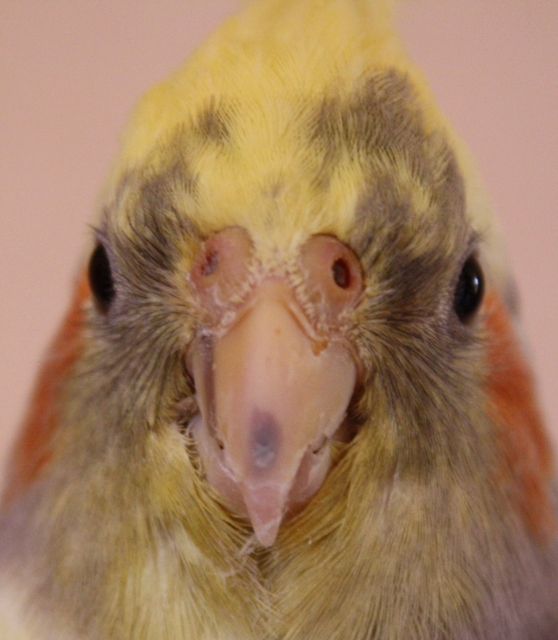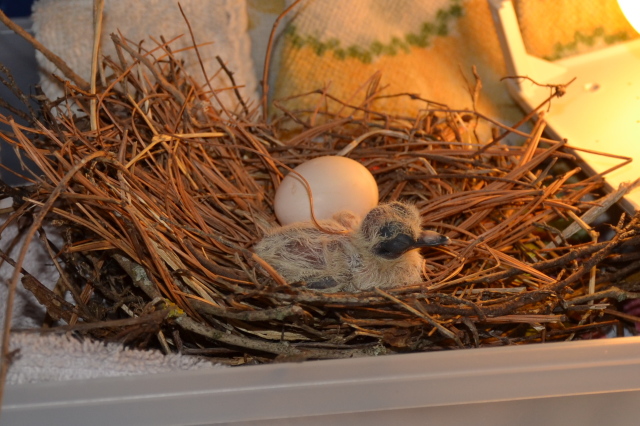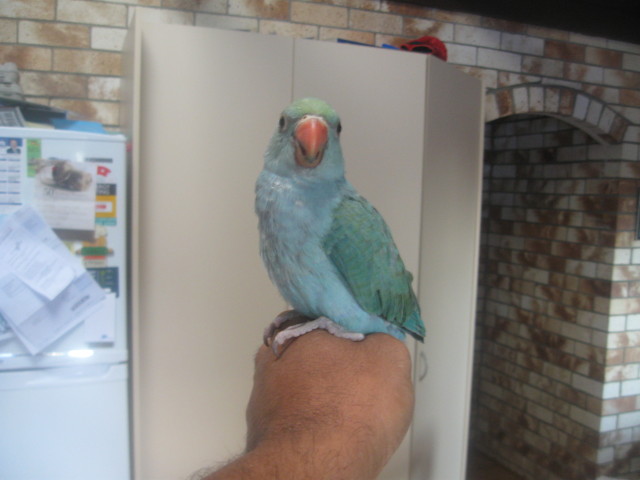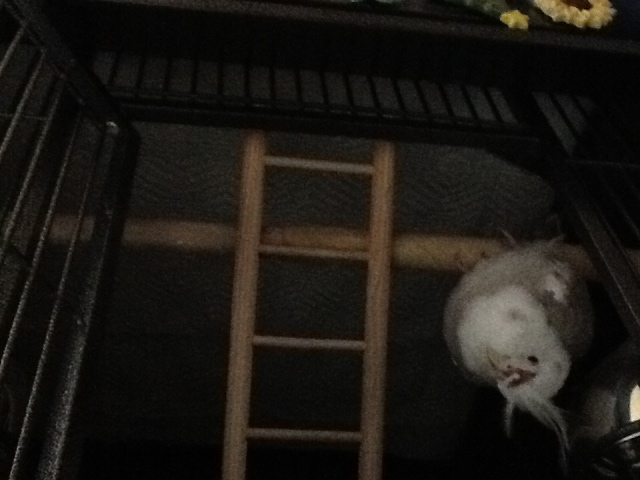QuestionIs it possible to tame a loverbird that was not
hand fed? If so how?
Also, I was told that by feeling how far apart
the sitbones? or tailbones are one can tell a
male apart from a female. I've tried this and so
far i've been very accurate. What is your take
on this?
-Jorge
AnswerHi, Jorge. Thanks for posting your questions.
It depends on the individual personality of the bird, the bird's age, and your skills and knowledge of how to tame a bird. Every bird is different just like humans are. The older a bird is, the harder it is to train because s/he gets set in it's ways. Change is hard on a bird the older it is (birds like routine). Therefore, it helps to have a bit of knowledge of the bird's personality in order to know how s/he might react to your training (and what you can/can't accomplish with the bird). One thing to remember, your goal is to gain the bird's trust. A bird that trusts it's human will trust anything it's human might hand it's way (it learns that you won't harm or injure it in any way). Similar to a parent/child relationship.
To try to tame an untame bird, you should take the bird into a neutral room/area of your home. It's cage should not be anywhere in sight (so that s/he can't run back to it's cage during the training session). You must have the bird's undivided attention during each session or you should stop and resume again later. Birds have short attention spans, so keep training sessions short and often, perhaps 2-3 times or more per day depending on your schedule. It isn't the length of the training sessions, it's the quality of each session. However, the more often you can interact with the lovebird, the better. Assuming the lovebird isn't tame at all, you'll have to start out by just teaching s/he how to step up and step down from a perch. Use those words during the training ("step up," "step down" or "up" and "down"...whichever you prefer, but use the same words each time). Push the perch to it's chest and force s/he to "step up." Praise and give the lovebird it's favorite treat (which is probably seed of some sort) EACH AND EVERY TIME s/he behaves in the manner you ask s/he to (you always reward positive behavior). Do the "step up" "step down" training as one session for as long as you have the bird's attention, but don't exceed several minutes. You can increase length of training sessions every day/every other day depending on the bird's progress. You must be very patient, as this process can sometimes take a long time (months for some birds; some birds can never be tamed). Once the bird has learned the up/down with a perch, try using your hand/finger with the up/down. Remember - you are also trying to gain trust, so don't do anything to lose any trust you've built up so far. Once the hand/finger training is accomplished, you can move on to other areas, such as touching the bird's feet (you'll eventually have to clip toenails), wings (helps in case you clip wings), petting the bird, putting the bird on your arm, eventually moving up to the shoulder, etc., etc. This is your bird, so you teach s/he whatever it is you want s/he to learn. Be careful though, sometimes people accidently teach birds things they don't want them to learn by not knowing what they are doing! During this process, you should be talking to the lovebird in soothing, calming tones, saying words you might want the bird to repeat. Taming a bird is simply gaining trust, developing a bond, etc., so that the bird will want to please you by doing what you want it to do. If there are other birds in the house, you'll have to work with the lovebird where it cannot see/hear the other birds so s/he won't be distracted. Take your time and pay attention to the bird's reactions to your training. If s/he is reacting negatively, perhaps you should change your approach. Don't be afraid to scold your bird when necessary (negative reinforcement), but ALWAYS reward when warranted. This is what teaches the bird to continue the positive behavior (as well as your praise). I'll warn you, however, that if you are doing this correctly, you will get biten...it's just part of the process. Sometimes when you have a really stubborn bird, it helps to let the bird fly around in a safe room so it can wear itself out some before starting any training session. Also, clipping the bird's wings is a must when you are trying to tame. With clipped wings, a bird is at your mercy to get from one place to another...it won't be able to fly away from you during training and will have to step up on the perch or your finger to go here or there.
How do you know you've been accurate (or have you just been lucky)? You don't know if you're accurate until you pair 2 lovebirds up using this method and they successfully hatch babies (or at least lay fertile eggs). Feeling a bird's vent is not a reliable method of determining sex. I always have birds DNA sexed for 100 percent accuracy, and I never rely on a person's word when it comes to the sex of a bird...they have to show me a DNA or surgical sexing certificate.
Chrys

 Bruise-like discoloration of beak (Cockatiel)
QuestionSasha
QUESTION: Our Cockatiel has develo
Bruise-like discoloration of beak (Cockatiel)
QuestionSasha
QUESTION: Our Cockatiel has develo
 mourning dove
Question
baby mourning dove
Hello,
My boys found a baby
mourning dove
Question
baby mourning dove
Hello,
My boys found a baby
 Color of my indian ringneck
Question
Boots
I have an eleven week old male ringneck
Color of my indian ringneck
Question
Boots
I have an eleven week old male ringneck
 White faced cockatiel injury
Question
cockatiel injury
My 8 year old cockatie
White faced cockatiel injury
Question
cockatiel injury
My 8 year old cockatie
 Eggs! :(
QuestionBroken Egg
QUESTION: I understand lovebi
Eggs! :(
QuestionBroken Egg
QUESTION: I understand lovebi